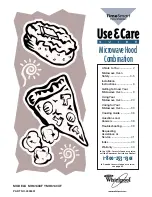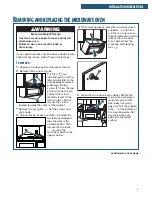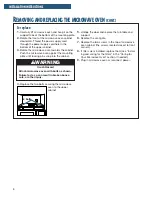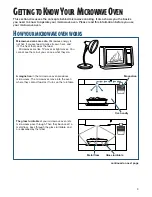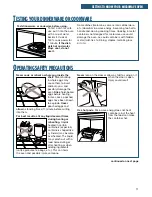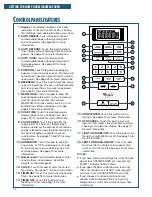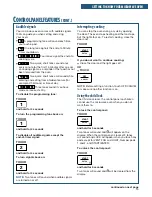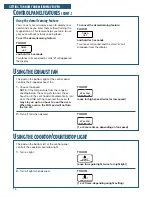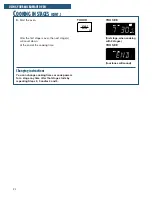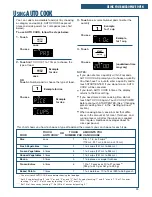
10
Microwaves
pass through most glass, paper, and
plastics without heating
them so food absorbs
the energy. Microwaves
bounce off metal con-
tainers so food does
not absorb the energy.
Microwaves
may not reach the center of a roast.
The heat
spreads to
the center from the
outer, cooked areas
just as in regular oven
cooking. This is one
of the reasons for
letting some foods
(for example, roasts
or baked potatoes)
stand for a while after
cooking, or for stirring
some foods during the cooking time.
The microwaves disturb water molecules in the
food. As the molecules bounce around bumping
into each other, heat is made, like rubbing
your hands together. This is the heat that does
the cooking.
GETTING TO KNOW YOUR MICROWAVE OVEN
NOTE:
Do not deep fry in the oven. Microwavable
cookware is not suitable and it is difficult to
maintain appropriate deep-frying temperatures.
Using your microwave oven may cause interference
to your radio, TV, or similar equipment. When there
is interference, you can reduce it or remove it by:
•
Cleaning
the door and sealing surfaces of
the oven.
•
Adjusting
the receiving antenna of the radio
or television.
H
OW
YOUR
MICROWAVE
OVEN
WORKS
(
CONT
.
)
To test the oven put about 1 cup of cold water in a
glass container in the oven. Close the
door and make sure it latches. Follow
the directions in “Cooking at high
cook power” in the “Using Your
Microwave Oven” section to set the
oven to cook for 2 minutes. When the time is up,
the water should be heated.
T
ESTING
YOUR
MICROWAVE
OVEN
•
Moving
the radio or TV away from the microwave
oven.
•
Plugging
the microwave oven into a different
outlet so that the microwave oven and radio or TV
are on different branch circuits.
R
ADIO
INTERFERENCE
For the best cooking results
•
Always cook food for the shortest cooking
time recommended. Check to see how
the food is cooking. If needed, touch
ADD MINUTE while the oven is operating
or after the cooking cycle is over (see the
“Using ADD MINUTE” section).
•
To help make sure the food is evenly
cooked, stir, turn over, or rearrange the
food about halfway through the cooking
time.
•
If you do not have a cover for a dish, use
wax paper, or microwave-approved paper
towels or plastic wrap. Remember to turn
back a corner of the plastic wrap
1
⁄
4
to
1
⁄
2
inch (6 mm to 1.2 cm) to vent steam during
heating or cooking.

